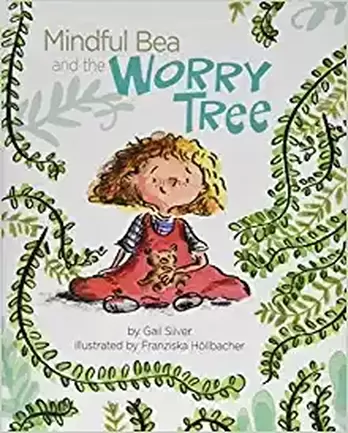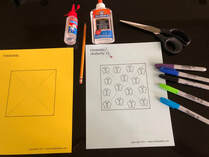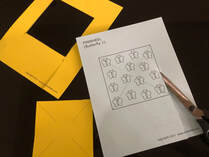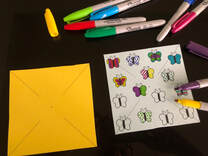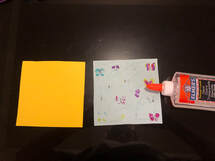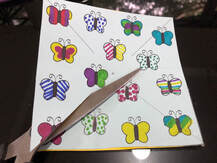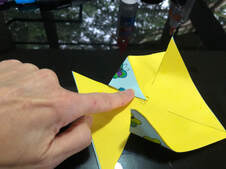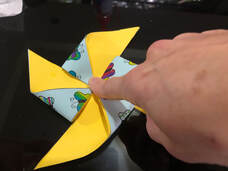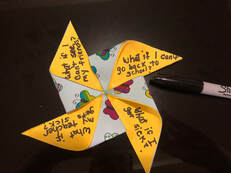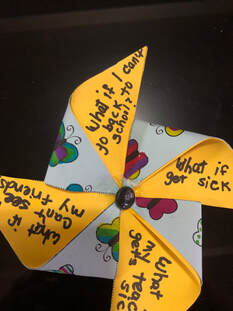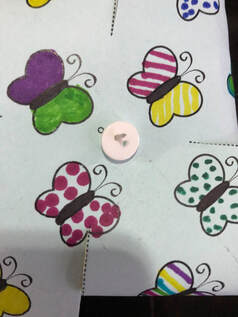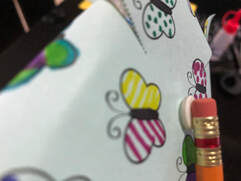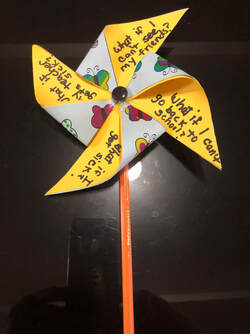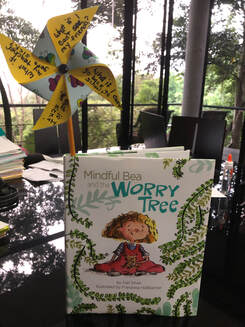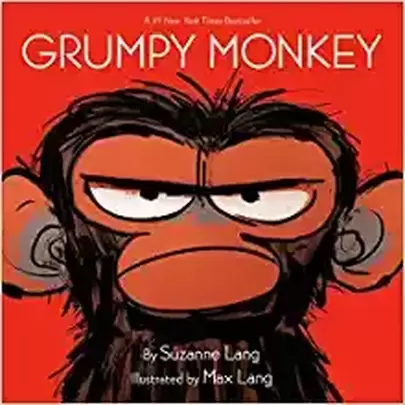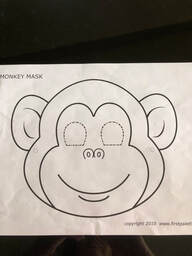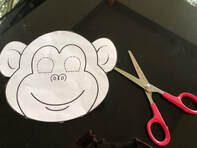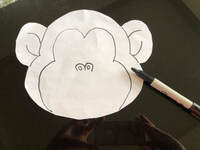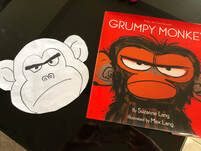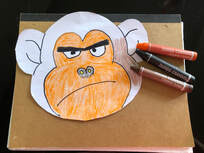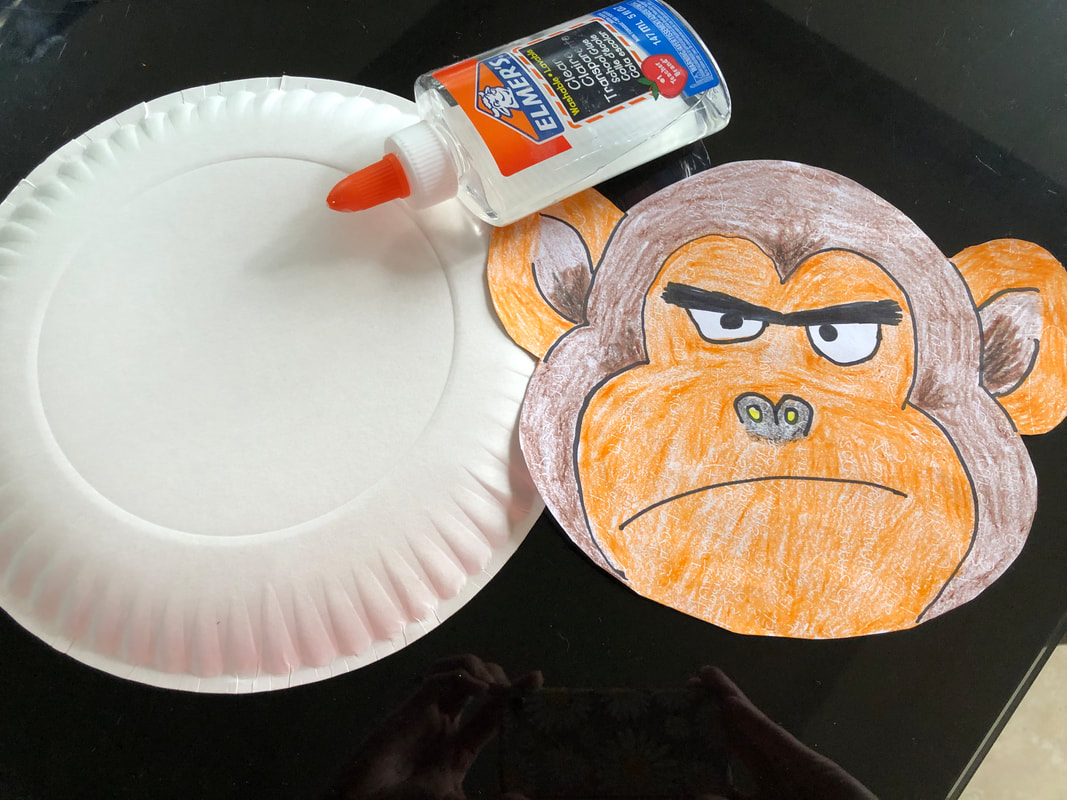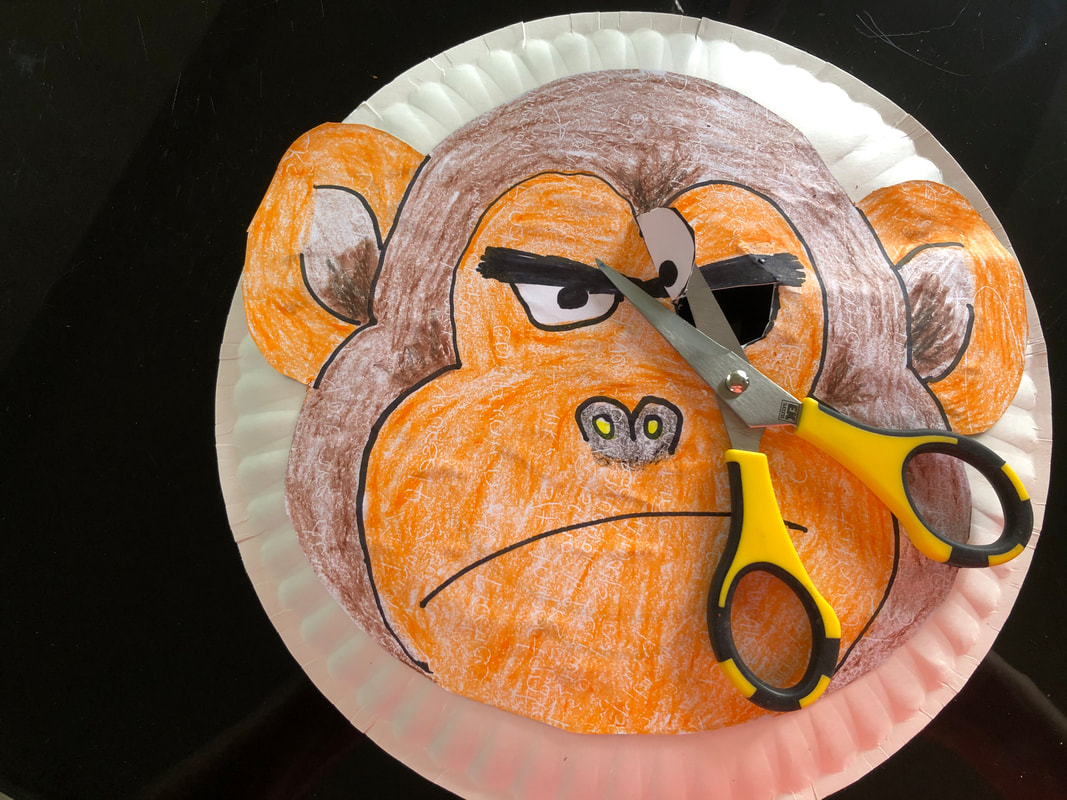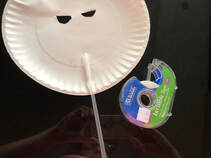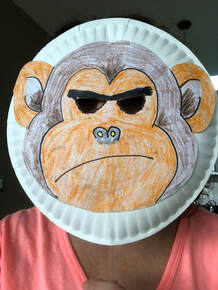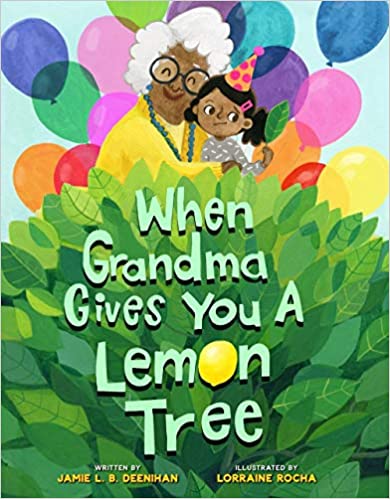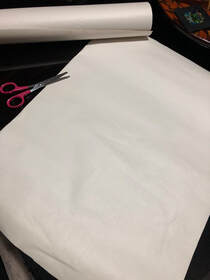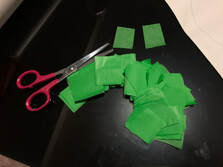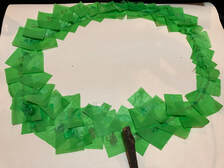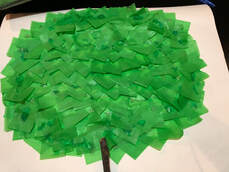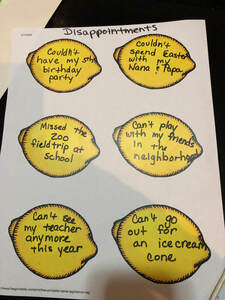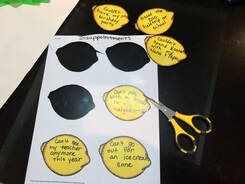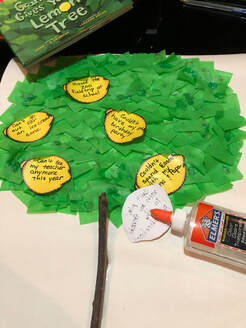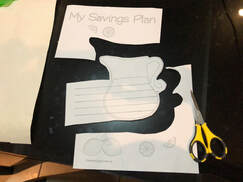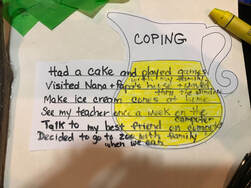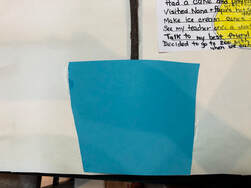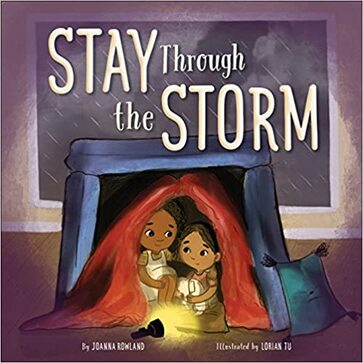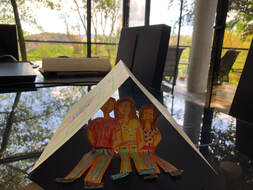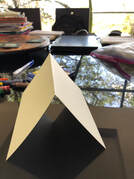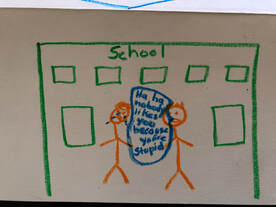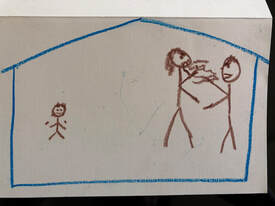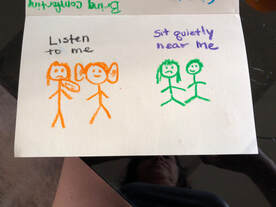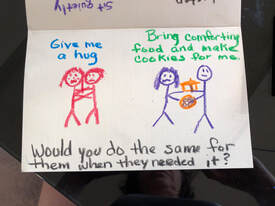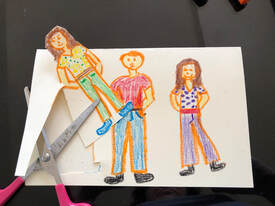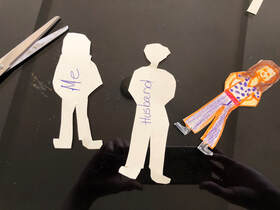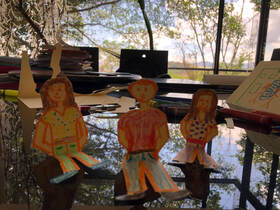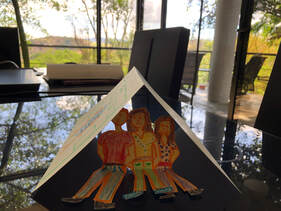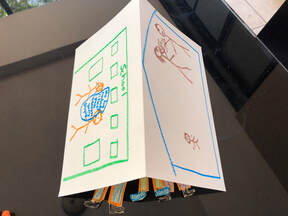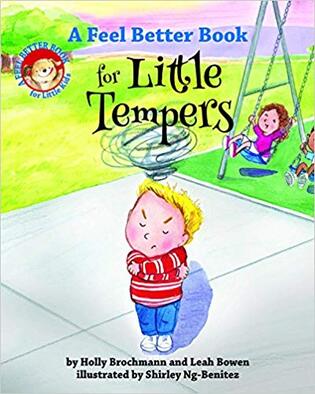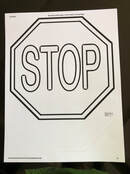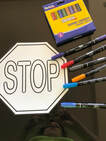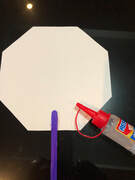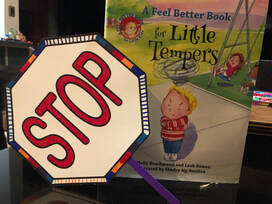A Book Review of Mindful Bea and the Worry Tree
Pandemic panic aside, anxiety disorders are the most common psychological issue among children. Anxiety has been on the rise in our society for many years. Anxiety and worry are a normal part of childhood, but it can become more severe in some children. This book, Mindful Bea and the Worry Tree, is excellent for children within the whole spectrum of anxiety, from everyday worries to severe disturbances. This book will help children name and understand their feelings of anxiety as well as learn to cope with it. The author, Gail Silver, utilizes a tree as an analogy for anxiety, with beautiful writing as follows: "like a seed from underground, it sprouts alive, unleashed, unbound. With knarled roots, this kind of tree feeds on thoughts ..." The story begins as Bea, in anticipation of her birthday party, is bombarded with thoughts of "What if ..." "What if nobody comes? What if we didn't bake enough cake?" These "what if ..." questions are very common in all of our thoughts when anxiety starts to take hold. Through Bea, Ms. Silver does a thorough job in describing the physical sensations in our bodies when we are feeling anxious. This is an important step in helping children recognize and name their feelings, which is crucial to coping. She then takes children through a meditation process, including deep breathing and slowing down thoughts in order to choose what to think about. Repetition of words is used in the text to show Bea slowly calming herself down and quieting her irrational thoughts as she is employing her coping skills. Franziska Hollbacher, the illustrator, follows the mood of the story beautifully through her illustrations. Initially the vines of the tree are taking over. Slowly these vines recede and the illustrations become more and more calm and then full of fun energy as the birthday party begins. This book includes a Note to Parents, written by a psychologist, which includes helpful information on how to use this book, information on understanding anxiety in children, how parents can help, and when to seek professional help. I strongly recommend this book for all children ages 4-8, whether struggling with temporary, everyday worries or with an ongoing anxiety disorder. Check out other books on emotions by Gail Silver at https://gailsilver.com/books-and-more/. I have included additional resources below and an activity to further help your child with their worries and anxieties. Activity and Resources for Mindful Bea and the Worry TreeBelly breathing is the most important skill to acquire and not easy to teach young children - here are a couple of links to videos to help teach belly breathing to kids https://www.youtube.com/watch?v=VOnDA6_MAWI https://www.youtube.com/watch? Relaxation/Meditation/Mindfulness - an abundance of apps are available on Iphone or Ipad with meditation/mindfulness exercises for kids. A few of the higher rated apps are: Stop, Breathe and Think Kids Breathe, Think, Do with Sesame Street (for the younger crowd) Calm (has a specialized kid's section) Activity Materials needed: pinwheel template https://www.firstpalette.com/printable/pinwheel.html Paper (cardstock works best)can use colored paper or white unused pencil with eraser push pin or tack scissors crayons or markers black marker glue -strong glue is helpful bead or small button
0 Comments
A Book Review of Grumpy Monkey
-with constant togetherness, major changes in routine, boredom, fewer emotional and social outlets, worry about the future, money issues, etc., I would venture to guess that grumpy monkey business is now at an all-time high! In other words, it is likely that we are all going bananas! For that reason, I have decided to review the Grumpy Monkey book this month for all of you "grumpy monkeys" out there (well, and here too!) Grumpy Monkey is a New York Times bestselling picture book that addresses that vague, all-the-big-feelings-at-once mood of GRUMPINESS. Jim Panzee had a day where nothing felt quite right. His jungle friends noticed his grumpiness, but Jim was in denial and insisted repeatedly, "I am not grumpy!" They pointed out his body language that showed otherwise. Marabou said, "You're all hunched," so Jim straightened his body. Lemur noticed that Jim's eyebrows were all bunched up and snake noticed a frown on Jim's face. Jim changed his body language, but the jungle friends knew that he was pretending. Even though he was trying not to look grumpy on the outside, Jim still felt grumpy on the inside. However, Jim still insisted that he was NOT grumpy. Sound familiar? Many times we don't notice ourselves feeling or acting grumpy. Children, as well as adults, tend to deny being grumpy when its pointed out. But grumpiness not only affects ourselves, but those around us, and sometimes it's even catchy! Grumpiness is often so many feelings lumped together into one that it is difficult to recognize in ourselves and even more difficult to pinpoint the cause. The animals couldn't understand why Jim was grumpy because it was such a beautiful day. The jungle friends tried to cheer him up, suggesting a mountain of ideas, but Jim didn't feel like doing anything. All of their suggestions were things that made his friends feel happy, but not Jim, especially not on this day. The efforts of his friends became increasingly annoying and Jim reached his limit. Finally, his mood escalated further and he went BANANAS, screamed at the top of his lungs, "I AM NOT GRUMPY!" and stormed off. After feeling bad for yelling at his friends and noticing that his friend, Norman, had become grumpy too, Jim finally accepted that he was grumpy. Accepting that feeling for himself, and his friends acknowledging his feeling, when he was ready, was all he really needed to start to feel a little better. In this book, Suzanne Lang promotes social-emotional learning by showing children the importance of reading other's body language. Another important emotional lesson is that sometimes cheering up is not what we need. Sometimes, we just need to feel grumpy and for that to be okay. Accepting your own and acknowledging other's feelings, when they are ready, can go a long way in being able to sit with your feelings and start to feel better. The illustrator, Max Lang, does a beautiful job portraying the distinct facial expressions and body language of Jim and his jungle friends. The illustrations are vivid and fun, adding to the enjoyment of the story. Suzanne and Max Lang have created a series of Grumpy Monkey books that are equally enjoyable. Check them out at https://www.penguinrandomhouse.com/authors/222967/suzanne-lang. Below I have an activity suggestion to go along with the book! Activity Idea for Grumpy MonkeyWe are going to make a Grumpy Monkey mask, so your child can hold it up when he/she is feeling grumpy and doesn't want to be bothered. They may even lend it to you, or other members of the family, when they notice you are having a grumpy day. Maybe it will help lighten the mood! Materials Needed: -printed copy of monkey face from this link https://www.firstpalette.com/pdf/monkeymask.pdf -black marker -scissors -crayons -glue -tape -paper plate -craft stick or straw
A Book Review of When Grandma Gives You A Lemon Tree
Schools and day cares are closed, meaning time with friends, relationships with teachers, special school events and our day to day routines-CANCELLED. Extra classes and team sports-CANCELLED. Holidays with family and friends-CANCELLED. Playing with friends in the neighborhood-CANCELLED. Time with Grandma and Grandpa-CANCELLED. Their 5th birthday party-CANCELLED. And that doesn't even count Mom and Dad's disappointments! These disappointments and major changes in routine have a big impact on young children too, who don't fully understand why this is happening OR, more specifically, why so many things are NOT happening! In my practice, I have found that young children are usually adept at understanding and identifying general emotions, such as, happy, sad, scared, and mad, but are less adept at understanding more specific emotions such as DISAPPOINTMENT. Sure, we are all feeling all of those general emotions right now and disappointment can be a combination of some of those. However, the more specific a young child can be about understanding and articulating exactly how they are feeling, the less the likelihood of major meltdowns. Not to say, meltdowns are not going to happen, but an increased feelings' vocabulary will help to decrease the incidence and intensity of those meltdowns. For example, if a child's plan for a day at the beach is ruined due to the rain, if they are able to verbalize "I'm so disappointed that it's raining and we can't go to the beach," the fallout will be much less intense. When Grandma Gives You a Lemon Tree is a well-written, entertaining story for children ages 4-8. It breaks the 4th wall in writing, meaning it addresses the reader directly which pulls the reader into the story. The book is about a young girl with a birthday wish list, filled with many fun technology choices. However, on her birthday, she is surprised by her grandmother with none other than a . . . LEMON TREE! Needless to say, our protagonist was quite DISAPPOINTED. Ms. Deenihan, the author, uses much humor in discussing the appropriate response to give Grandma and what you should NOT do with the lemon tree. When our protagonist's friends are all playing with their technological toys, the lucky, lemon tree girl is learning to care for her lemon tree and is not particularly happy about it! The feelings in the book are depicted beautifully by the illustrator, Lorraine Rocha, which add much spunk to the story. Once the fruits of her labor start to appear, our main character starts to see the joy in a caring for a tree, and grandma teaches her what she can do with those fruits--make lemonade of course! Conveniently, the author shares a recipe for lemonade, so the readers can make it too! Our protagonist sells her lemonade, with the help of Grandma, through a lemonade stand, bringing joy to many in the community. And . . . she is able to use the money from the lemonade stand to . . . buy something on that long, NOT-forgotten birthday list! Literally, when life gives you lemons, make lemonade (and sell it!) Well, while shopping for her new technological toy, an added message is born in the book which fosters a sense of community and finding joy in activities outside of technology. I strongly recommend that you buy this book or borrow it from your local library(when you can!) to benefit from these amazing messages, especially during these tough times. Introduce the word "disappointment" to the child and discuss his/her specific disappointments since the Pandemic began. Share with them some of your own disappointments. I have added an activity below to go along with the story to help your child discuss his/her recent disappointments and ways of coping. Activity Idea for When Grandma Gives You A Lemon TreeFirst of all, MAKE LEMONADE! If you haven't had a chance to pick up the book yet, here is a recipe. https://wisconsinhomemaker.com/state-fair-lemonade-recipe/ Second of all, MAKE A LEMON TREE! Materials Needed: This month, since we can't really get out to buy supplies, we might have to improvise with the supply list. Use whatever you have around the house that will work-be creative! This project is a little more time consuming than many I have suggested in the past. Feel free to complete it over several days. -large paper or poster board -twig (Getting the kids outside to explore for a perfect "lemon tree" twig could be beneficial! If not, cut brown construction paper or paint a trunk.) -green tissue paper or construction paper cut into small squares -printed lemons https://www.freeprintable.com/print/free-printable-name-tags/lemon-tag -printed lemonade pitcher https://onemamasdailydrama.com/wp-content/uploads/2017/08/lemonade-color-savings.pdf -scissors -glue (strong glue or hot glue gun for twig and elmer's or glue stick for everything else) -black marker -crayons or markers -construction paper for pot -stickers (optional)
A Book Review of Stay Through the Storm
Why would we broach the subject of suicide with young children? It's very painful for us to accept that suicide touches lives of young children, but it does. They may have teenage or adult relatives or friends that die due to suicide. They may have suicidal thoughts themselves or may even have made attempts. Even though successful suicides are rare in children below age 10, children as young as 5 years old have successfully committed suicide. Suicidal thoughts at a young age are a major predictor of later successful suicide. Therefore, it is important to address coping with these feelings from a young age. Joanna Rowland, the author, approaches this intense topic in an age-appropriate and gentle manner. Her theme throughout the book stresses the power of friendship to help us through life's storms. The story helps children understand the importance of reaching out or accepting the help of others when their lives feel full of darkness. "Stay" is a repeated word throughout the dialogue. "Stay" and allow me to care for you. Together we can conquer your hopeless, scared feelings. Tell me about your feelings, I will understand because I am human and I probably felt that way at one time or another too. This will end and we'll get to the other side of it together. If the feeling comes again, I will be here for you then too. This book is an example of humanity at its best. Through the illustrations, Lorian Tu, portrays hopefulness through vivid colors. The illustration of the fort on the cover and in the book supports the theme that you are safe and protected and can be helped through tough times. I highly recommend this book for all children, especially those who have been through or are going through dark and difficult times. This gentle, beautiful story provides coping skills, reassurance and hope to the youngest among us. Check out this author's website for excellent books on mental health and other topics for young children. https://www.writerrowland.com/ Activity Idea for Stay through the StormHave a discussion with your child after reading the book. The following questions can help. 1. If you were feeling really big feelings like sad, scared, confused, hopeless or worried, who would you want to be with you to help you(can be more than one person)? 2. How would that person(s) know you're having big feelings and that you want them to stay with you? 3. What do you think that person can do with you to help you feel cared about and safe? 4. Who do you think would want YOU with them if they were having really big feelings? After the discussion, make a fort/tent with the child and include their safe people inside the tent. Directions are below.
And... in the words of Mr. Rogers...
Welcome back to my blog for 2020!!! First things first. It is my Blog Birthday this month! It has been one year since I started this new endeavor. In honor of my Blog Birthday, I have christened my blog with the name of "Psyched Writer." This seemed appropriate for my overall website and the content of my blog. Why, you ask? I am super PSYCHED about reading, writing and reviewing Children's books with PSYCH content. My background is in PSYCH and I am super PSYCHED that you have joined me on this adventure. Please comment below if you have any comments or ideas for blog posts in 2020. Thanks for being here! Now, moving on to the first post of 2020 . . . A Book Review of A Feel Better Book for Little Tempers
However, eventually children need to get ahold of those BIG feelings and learn to regulate themselves and express those feelings in more socially acceptable ways. If they don't, they will likely have a lifetime of struggles. That is where our job as parents, therapist and teachers comes in. This book, A Feel Better Book for Little Tempers, is a great tool to help us with what seems like, at times, an insurmountable task. The sing-songy rhyme and fun, simple, writing style make this book appropriate for even the youngest of temper throwers! My favorite thing about the structure of this book is that it uses the point of view of what writers(and actors) call "breaking the fourth wall." This means that the authors are talking directly to the reader. This technique draws children into the story and encourages them to participate. This writing style is very useful for this book as it encourages children to talk about their anger and practice the calming techniques. This book is appropriate for young children ages 3 - 6. The illustrator, Shirley Ng-Benitez, has created colorful, vivid illustrations that also pull the youngest readers into the book. The feel of the illustrations are calming, but active, which is exactly what needs to be expressed through this book. She created strong facial expressions on the characters which will help young readers with the important skill of recognizing feelings on others. Through this book, Holly Brochmann and Leah Bowen, have done a wonderful job in covering all the bases of helping children with their angry feelings. The following concepts are covered in the book: 1. A description of what it may feel like in your body when you are angry. "...your ears are quite hot and your cheeks are all red." 2. A definition of temper with very helpful illustrations that further clarify the explanation. 3. Examples of specific behaviors the child may use to express their angry feelings. "You try stomping your feet, maybe a scream or a shout..." 4. Validation and normalization of the feelings of anger. "...It's not only you who has tantrums to throw." 5. Age appropriate suggestions of calming techniques, including movement, sensory pressure (giving yourself a hug), muscle relaxation, deep breathing, etc. The suggestions include physical activity along with imagery which is very useful. A Feel Better Book for Little Tempers reinforces that it is okay to get angry if you know how to express it appropriately. It is written in a gentle, supportive manner that gives little ones the message that they are not alone with their anger and an adult is there to help them. "...Let's practice together, just you and I." The authors empower young readers with the message that they have the ability to take charge of their anger. It shows a sense of pride among the children in the book when they practice the skills. The child likely will not be receptive to this book in the throws of a temper. We sure don't want the book to go flying across the room or have pages ripped out! My suggestion in utilizing this book is to read it regularly when the child is calm. Therefore, when the child does become angry, they are prepared and familiar with what to do. Reminding them and working with them when angry on the strategies presented in this book will go much better if they have the knowledge behind them. With all the above in mind, there is one crucial technique in helping a child with BIG feelings. That is to name the feeling(s), help the child explain why they are having that feeling, and validate it. This simple technique goes a long way in helping to calm little ones and to teach them about their feelings. By the way, this is very helpful for adults as well! The book includes a Note to Parents and Caregivers which is very thorough and helpful in understanding and dealing with a child's temper. I have included an activity below to reinforce the concepts in this book. To learn more about these authors and other Feel Better Books in this series, check out this link to read an interview. https://maginationpress.apabooks.org/?p=1254 Activity Idea for A Feel Better Book for Little TempersThis book provides valuable strategies for young readers to help control their BIG feelings. It will be helpful for the adult to practice these strategies together with the child often. It is also a great idea to model using these strategies in front of your kids when you, yourself, become angry. A technique I have used often in my practice with young children is to utilize role playing techniques to practice important skills. This is like "pretending" and very enjoyable for young children. But first, we need to make a visual aid together. Materials Needed: Stop sign template http://www.supercoloring.com/coloring-pages/stop-sign Sturdy card stock paper Scissors Markers or crayons Glue craft stick Role Playing Exercise
1. Let the child know that you'd like to play a game of pretend. 2. Tell the child that you are both going to take turns pretending to make the other person angry and practice how to handle your anger. 3. The adult starts and, for example, may give the child a toy and then grab it away from them. 4. The adult holds up the handmade STOP sign in front of the child (Giving the message that you stop and think first before reacting). 5. The adult then says "How are you feeling?" or "How did that make you feel?" 6. For younger children you may have feeling pictures nearby so they can choose. 7. Acknowledge their feeling(s) and state how it would have made YOU feel if it happened to you. Maybe ask if it ever happened to them before or tell them about a time that it happened to you and how it worked out. 8. Ask the child "Is it okay to feel that feeling?" "Would it be okay to hit me or call me names?" "Why not?" 9. The adult then asks the child "What can you do instead to calm yourself down?" Show them the options in the book as ideas if necessary. 10. Practice the skill they picked together. 11. Ask how they are feeling after you complete the practice. If they are still feeling angry, have them pick another technique from the book and practice that one together. 12. Provide much positive feedback to the child when practicing the techniques. 13. Now it's the child's turn to make YOU feel angry. Coach them through this. Make sure they hold up the stop sign for you after they make you angry. Handle it inappropriately at first (for example, you can yell or say "You're not my friend anymore!" so they can remind you what you can do. Practice the skill together. 14. Make it fun! |
Follow me on Twitter, Pinterest and LinkedIn
Categories
All
|
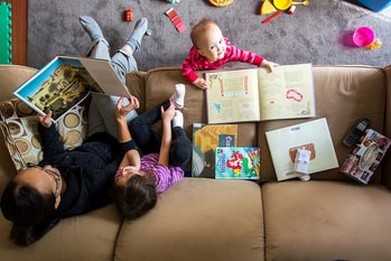
 RSS Feed
RSS Feed
